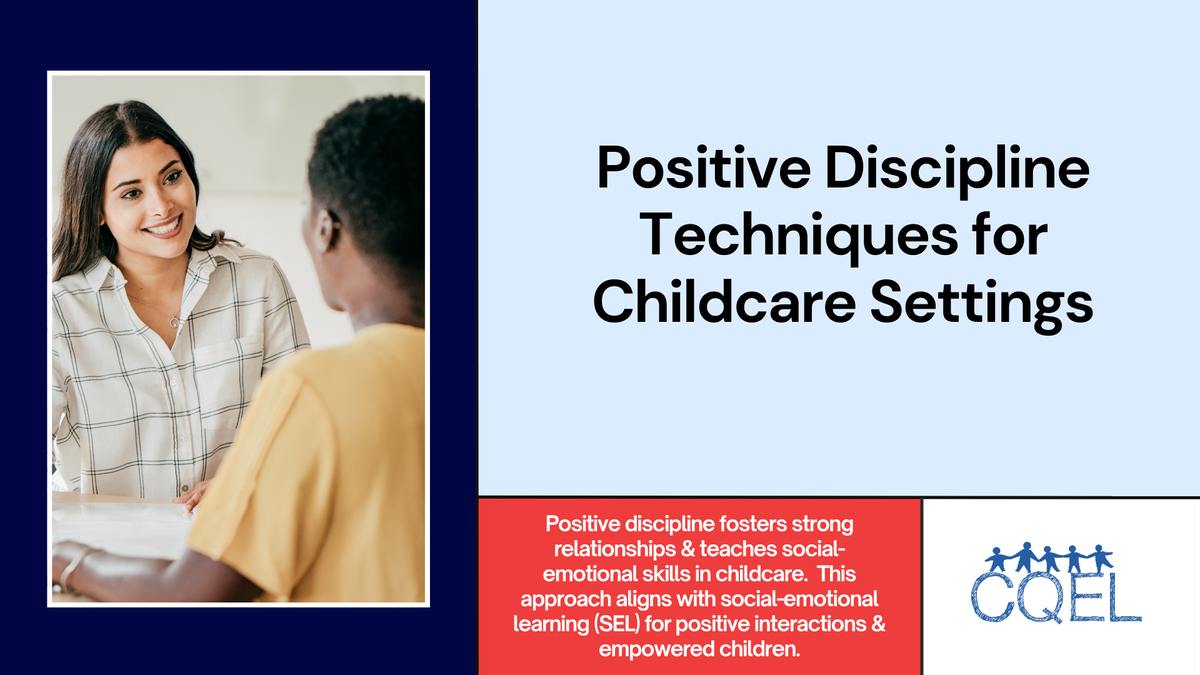Positive Discipline Techniques for Childcare Settings
Build happy, confident learners! Positive discipline fosters strong relationships & teaches social-emotional skills in childcare. This approach aligns with social-emotional learning (SEL) for positive interactions & empowered children.

In childcare settings, fostering positive and productive interactions with children is paramount. Positive discipline, a philosophy that emphasizes encouragement, guidance, and teaching over punishment, offers a framework for achieving this goal. It prioritizes building strong relationships with children, nurturing their social-emotional development, and empowering them to make responsible choices. This approach aligns perfectly with the growing focus on social-emotional learning (SEL) in childcare programs across the country. Unlike punishment, which focuses on controlling behavior through negative consequences, positive discipline aims to cultivate self-regulation and intrinsic motivation in children.
The core principles of positive discipline revolve around building trusting relationships with children. This can be achieved through active listening, where you genuinely pay attention to a child's words and feelings. Briefly mention techniques like active listening and offering choices to foster these relationships. For instance, instead of demanding a child put away their toys, offer them a choice between blocks and cars.
Positive reinforcement plays a vital role in positive discipline. Recognize and praise desired behaviors, both verbally and nonverbally. A simple "Wow, you shared your toy with your friend!" or a high five can go a long way in encouraging positive choices. Natural and logical consequences allow children to learn from their actions in a safe and age-appropriate way. If a child refuses to wear a jacket outside, they may experience feeling cold (natural consequence). This teaches them the importance of bundling up without resorting to punishment.
Now, let's explore how these principles translate into action. Redirecting unwanted behavior involves offering engaging alternatives. A child throwing sand? Offer them shovels and buckets for constructive sandcastle building (Good). Time-in, as opposed to time-out, provides a calming space for children experiencing strong emotions. Instead of isolating a child in a corner alone (Bad), sit with them and offer a calming book or activity (Good). Open communication and empathy are crucial. Validate a child's feelings, even negative ones. If a child is frustrated with a toy, acknowledge their frustration and offer help instead of simply telling them not to cry (Good).
Every state has regulations regarding childcare discipline practices. Familiarize yourself with your state's regulations to ensure your approach aligns with legal requirements. Resources like the Center for Positive Discipline (https://www.positivediscipline.com/) offer valuable guidance and training opportunities.
Positive discipline fosters social-emotional development in children by equipping them with the skills to manage their emotions, resolve conflicts constructively, and make responsible choices. By incorporating these techniques and continuously seeking knowledge, childcare providers can create a nurturing environment where children can thrive. Remember, positive discipline is a journey, not a destination. Be patient, celebrate successes, and refine your approach as you learn and grow alongside the children in your care.
Examples of Good, Bad, and Illegal Discipline Practices in Childcare Centers to be on the look out for:
- Good: A child is struggling to share a toy. The caregiver facilitates a conversation between the children, helping them take turns (Positive reinforcement, teaching problem-solving).
- Good: A child refuses to nap. The caregiver places them in a quiet cot with a calming book for "quiet time" (Time-in, allows the child to calm down).
- Bad: A child spills their juice. The caregiver yells at them and makes them clean it up alone (Shaming, ineffective for teaching responsibility).
- Bad: A child bites another child. The caregiver isolates them in a corner for the rest of playtime (Time-out used punitively, doesn't address the root cause).
- Illegal: A child throws a tantrum. The caregiver spanks them (Corporal punishment, illegal in all childcare settings).
- Illegal: A child wets their pants. The caregiver withholds bathroom privileges as punishment (Withholding basic needs, illegal and harmful).
